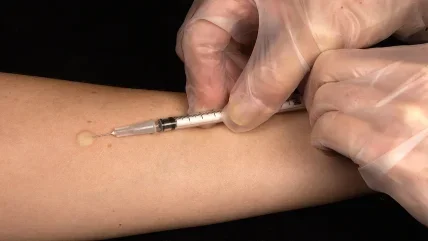
According to the World Health Organization (WHO), more than 10.6 million people fell ill with tuberculosis (TB) in 2022. Caused by bacteria in the Mycobacterium tuberculosis complex (MTBC), TB is one of the top infectious diseases worldwide.
Although treatable, combatting its spread has been hindered by various factors. Limitations in diagnostic capabilities have meant, until recently, diagnosis was slow. The reference standard for TB diagnosis – culture testing – can take several weeks. Sputum smear microscopy – widely used for diagnosis in low and middle-income countries – lacks the sensitivity needed. Add to this low patient adherence to long multidrug treatment regimens and the fact that widespread multidrug-resistance to first-line treatment has developed following decades of use, and the problem is clear.
Second-line drugs have emerged as life-saving medications for people with multidrug resistant TB (MDR-TB). The WHO now recommends BPaLM therapy for MDR-TB, which is a six-month treatment with bedaquiline, pretomanid, linezolid and moxifloxacin.
New rapid molecular diagnostic tests
Diagnostic tests to identify MTBC rapidly and determine the appropriate treatment are needed. The WHO recommends molecular rapid diagnostic tests for initial detection of TB and resistances to the first-line drugs rifampicin and isoniazid, as well as major second-line anti-TB drugs. Bruker has played a leading role in supporting the fight against TB for more than 20 years, offering an unmatched range of mycobacteria molecular tests and working with the WHO to ensure their high quality. Bruker products endorsed by WHO include:
- First-generation GenoType MTBDRplus VER 2.0 for initial detection of resistances to isoniazid and rifampicin in patients with TB and GenoType MTBDRsl VER 2.0 for initial detection of major second-line drug resistances in patients with MDR-TB.
- Next-generation highly multiplexed FluoroType MTBDR VER 2.0, powered by the innovative LiquidArray technology for simultaneous detection of MTBC and first-line drug resistances to isoniazid and rifampicin in patients suspected of TB.
Latest innovations from Bruker
Bruker’s next-generation molecular test, LiquidArray MTB-XDR VER 1.0, based on LiquidArray multiplex technology, detects MTBC and mutations associated with resistance to five WHO-recommended second-line drugs, including linezolid and moxifloxacin – both major components of the BPaLM therapy with well-known resistance occurrences. The test delivers in-depth information at sequence level and enables same-day result reporting to start patients on individualised treatment plans, increasing the chance of a successful outcome. It is the only commercial product to test for linezolid resistance and offers multiplex testing for 28 mutations across six genes, conferring resistance to moxifloxacin, levofloxacin, amikacin, linezolid and ethambutol from sputum specimens and cultivated samples, all with a single polymerase chain reaction (PCR) test.
Bruker’s LiquidArray technology brings next-generation multiplexing to the routine clinical microbiology laboratory for infectious disease diagnostics including mycobacteria and drug resistance detection. The comprehensive workflow is complemented by the additional LiquidArray-powered FluoroType Mycobacteria VER 1.0 test for differentiation of the closely related nontuberculous mycobacteria.
The LiquidArray range of TB products enables comprehensive patient testing to ensure timely and relevant therapy that maximises the likelihood of treatment success and brings us a step closer to supporting the United Nations’ pledge to end the TB epidemic by 2030.





